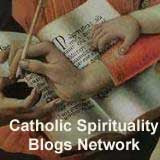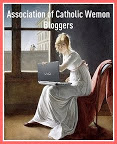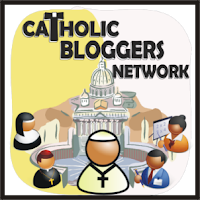
Parents: I have written a short biography of Pope Francis for children. Scroll down to find definitions of vocabulary words, links, downloads, and other teaching ideas. Update: Bergoglio was made a cardinal three years after becoming archbishop, not 13.
“Habemus Papam!” the protodeacon announced to the waiting crowd in St. Peter’s Square on March 13, 2013. “We have a pope! The most eminent and most reverend Lord, Lord Jorge Cardinal of the Holy Roman Church Bergoglio, Who takes for himself the name of Francis.”
The people cheered when they heard the new pope would be Pope Francis. But they also asked themselves, Who is Cardinal Bergoglio? Where is he from? What kind of pope will he be?
Jorge Mario Bergoglio was born on December 17, 1936 in Buenos Aires, Argentina. His name is George Marion in English. He had two brothers–Oscar Adrian and Alberto Horacio–and two sisters–Marta Regina and Maria Elena. Only Maria is still living. She is 11 years younger than Jorge. She cried when she learned her brother had been elected pope.
Mr. and Mrs. Bergoglio immigrated from Turin, Italy to South America in the 1920’s. Jorge’s father was a railway worker. His mother stayed home with the children.
The future pope is remembered for jumping up and down the stairs at Our Lady of Mercy parish school. He said his multiplication tables as he jumped. The Bergoglio family lived two blocks from the school and their parish church. Jorge made his First Communion there when he was 9. He dearly loved some of the nuns who were his teachers. He visited them until their deaths. When he would go to drink tea at the convent, he would always wash his own cup afterwards.
A woman named Amalia Damonte claims that Jorge wrote her a love letter when they were both 10 or 12. In the letter, Jorge promised to marry Amalia when they grew up. If not, he would become a priest. Amalia’s parents tore the letter up. They would not let her see Jorge again. Later, of course, Jorge did become a priest.

Mao of Argentina from freeworldmaps.net.
Jorge is said to have been a great reader. He liked to play soccer with some of the neighborhood boys, but was not very good at it. However, he still loves to watch soccer. Pope Francis is a big fan of the San Lorenzo (St. Lawrence) soccer team.
In 1957, when Jorge was 21, he became seriously ill with pneumonia. Doctors removed part of his right lung. This was a common practice in the days before antibiotics. Experts say that there is no evidence that Pope Francis has any problems functioning with one lung. He appears to be in excellent health.
A year after his illness, Jorge entered the Society of Jesus, commonly known as the Jesuits. The Jesuit Order was founded by St. Ignatius Loyola of Spain in 1534. No other Jesuit has become pope. It took many years of study and prayer before Jorge made his final vows in 1973. He swore to be a faithful member of the order until his death. In the years in between, he taught literature and psychology in high school. He also earned a master’s degree in chemistry. He was ordained a priest in 1969.
After his final vows, Fr. Bergoglio was a novice master, then provincial of the Jesuits in all of Argentina and Uruguay. The 1970’s were terrible years for Argentina. The Argentinian government waged war against some of its own citizens. Thousands of people disappeared. Fr. Bergoglio hid some people who were wanted by the government. He even gave his own identity papers to a man who looked like him, to help him escape from the country.
Fr. Bergoglio became Bishop Bergoglio in 1992. He assisted the bishop of Buenos Aires, and became archbishop after him in 1998. Three years later, Pope John Paul II named him a cardinal. It is said that he received the second highest number of votes in the papal election of 2005. (The cardinals are not supposed to talk about what happens during a papal conclave, but someone probably broke his vow of secrecy and told the news media!) Still, Cardinal Bergoglio remained a humble man.

Pope Francis’s coat of arms.
In Argentina, Cardinal Bergoglio has always loved the poor and the sick. At least twice he has visited the sick and suffering on Holy Thursday to wash and even kiss their feet. When he was elected pope, he chose to be named after St. Francis of Assisi, who once kissed a man with leprosy. After being elected, Pope Francis said, “I want a poor Church and a Church for the poor.” He told the people of Argentina not to travel to Rome for his installation, which is taking place today (Tuesday, March 19). Instead, he said to give the money they would have spent on traveling to the poor.
As archbishop of Buenos Aires, Pope Francis chose not to live in the bishop’s palace. He lived in a simple apartment instead. A disabled Jesuit lived with him. He cooked his own meals. He enjoyed fruits, chicken, and salads, rather than the heavy traditional dishes of his home country. Instead of being driven in a fancy car, he took the bus. When he came out on the balcony of St. Peter’s Basilica to speak to the people for the first time as pope, he was simply dressed in white. He chose not to wear some of the rich-looking clothes made for the pope. He has also ridden in a bus with the cardinals since becoming pope, instead of riding in a special car. He paid his own bill in person at the hotel were he first stayed on coming to Rome.

Papa Fransisco by Sonja Hausl-Vad. Please see her blog for other great religious artwork.
No one knows exactly what Pope Francis will do as head of the Catholic Church. But we do know that, like St. Francis of Assisi, he will look after the poor and the sick in whatever way he believes God wants him to. He has also said that he loves God’s creation as St. Francis did. In addition, many people are hoping that he, like St. Francis, will help rebuild God’s Church.
We are truly blessed to have Pope Francis lead us. Viva il papa! Long live the pope!
****
Vocabulary:
- protodeacon – the cardinals are divided into 3 groups: cardinal bishops, cardinal priests, and cardinal deacons. The protodeacon is the highest-ranking cardinal deacon.
- pneumonia – a swelling of tissue in the lungs, usually caused by an infection.
- antibiotics – medicine that can destroy or prevent the growth of disease and infection.
- novice master – the man in charge of overseeing those who are in the beginning stages of life in a religious order.
- provincial – the person in charge of all members of a religious order in a particular province or area.
- leprosy – a nerve disease that often causes damage to a person’s skin, eyes, and arms and legs. It used to be thought that leprosy was very contagious.
I gathered the information in this biography from numerous internet sources, including the Associated Press, Vatican Radio, USCCB, NBCLatino, Whispers in the Loggia, and Wikipedia. All the text is my own. Please share this post with your friends and blog readers through linking to it. Due to the great amount of work involved, I ask that you not reblog or reprint it without my prior consent. Thank you.
Connie Rossini
****
And now, for curriculum ideas.
Literature: Read Francis: the Poor Man of Assisi by Tomie de Paola or Saint Ignatius of Loyola: For the Greater Glory of God.
Science: Considering Pope Francis’s degree in chemistry, watch Hunting the Elements, a 2-hour Nova Special which our whole family enjoyed. Make a periodic table box with real elements, and a periodic table lap book.
Latin: Learn the meaning of Latin Phrases Catholics Should Know with this list I complied.
History and Geography: Use the ideas and links at Our Cup of Tea for learning about Argentina. Find out who were the immigrants in your family history. Locate their hometowns–or at least countries–on a map. Draw the flags of each of the home countries.
Just for Fun: Find Pope Francis among these pictures of the popes. Paper Dali has a Pope Francis coloring page.
Misc. Links: Try these worksheets about the pope at Parents.com. Trading cards, prayer cards, and other resources can be printed from thatresourcesite.com. Loyola Press provides information for writing a welcome letter to the pope.













Wonderful! Thanks for writing my lesson plans for tomorrow. 🙂
LOL, Micaela. These posts do double duty for me too.
Great resource!! Thanks for sharing!
You’re welcome! I’m happy to see this post is still getting read a lot.
Thank you, Connie…This is fabulous! And the resource links too:) I found you through Catholic Pinterest. Nice to meet you:) God bless our new Papa!
Welcome, Tiffany. I’m glad you found the post useful.
Thank you so much for this resource!
You’re welcome, Nancy. Thanks for visiting!
Blessings to you, Connie, for aiding we, less creative, Catholic homeschool moms! Would be great if this was in a downloadable word document 🙂
Thanks, Jen. I debated whether to make this a blog post or a download. I’ve noticed that a lot of my downloads get overlooked, while people read posts. The post does print fairly nicely, if you do a print preview. Maybe next time I’ll do it both ways, and you can choose the way you like.
I am a convert to Catholicism, which I embrace. However, I am unclear on something: what does it mean when you state you “practice Carmelite spirituality”? We very much want to keep our children as life-long Catholics, and pray that at least one could become a religious sister or priest. I am at a loss how to do that, even homeschooling, because there aren’t a lot of Catholic homeschoolers close in our area to befriend. 🙂
Welcome, Heidi. I used to be OCDS–a member of the Secular Order of Discalced Carmelites. I was unable to continue due to a combination of family commitments, moves away from our community, and internal problems with the community I was part of. The Discalced Carmelites were formed when Teresa of Avila and John of the Cross reformed the Carmelite Order in the 16th Century. St. Therese was also a Discalced Carmelite. All 3 are doctors of the Church. Daily mental prayer is a major focus of Discalced Carmelite spirituality. That’s why I write so much about prayer. I am also learning how to trust God as St. Therese did. I really should add a page to my site about this. I just haven’t had time yet. My favorite book about Carmelite spirituality is Fire Within by Fr. Thomas Dubay.
Some homeschooling moms I know find a lot of their support through reading and commenting on blogs. Of course, that might be of limited help to your kids, as far as spending time with like-minded families goes. There are many good Catholic families who send their kids to parish or other private schools. We also socialize with Protestant homeschoolers, and that can actually be valuable for keeping your kids Catholic too. Someday they will have to interact with lots of people who think differently from you. While they are at home, you can discuss differences between Catholic and Protestant beliefs. Then they won’t be so susceptible to other Christians who might try to lure them out of the Catholic Church. Ideally, parishes should be a community to support Catholic families, but that seldom happens for families who don’t attend the parish school.
If any of my readers have other ideas for Heidi, please chime in!
Hi Connie
May I please use your excellent article with my students? I will ensure your name appears as well as the sources.
Marianne, thanks for asking. Yes, go ahead and use it for teaching, even if you’re not homeschooling. That’s why I posted it. I just want to get credit for my work!
May I please print five copies for my CCD students? I will include the blog post address if that is acceptable. Much thanks.
Sure, thanks for asking. I was really thinking of reprinting in terms of republishing, not in using it in the classroom.